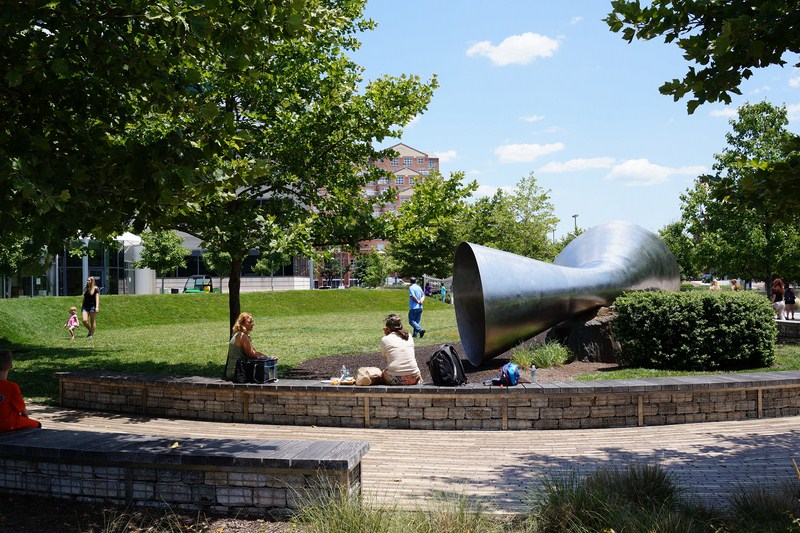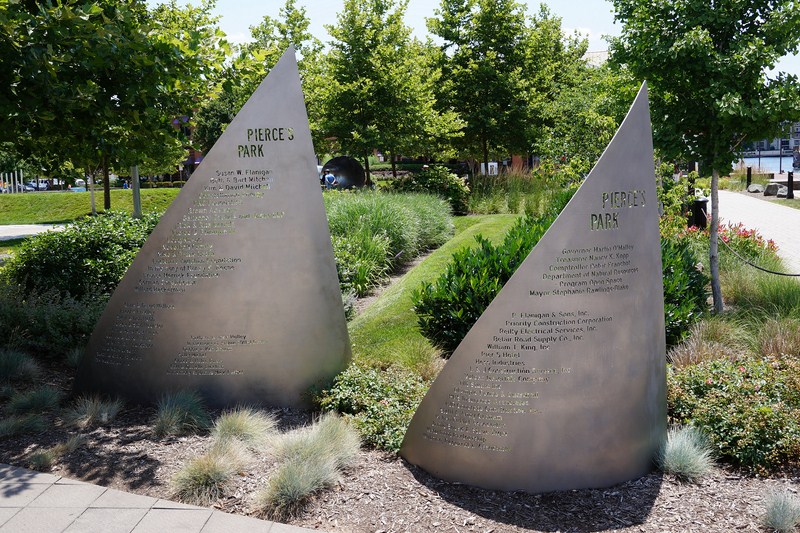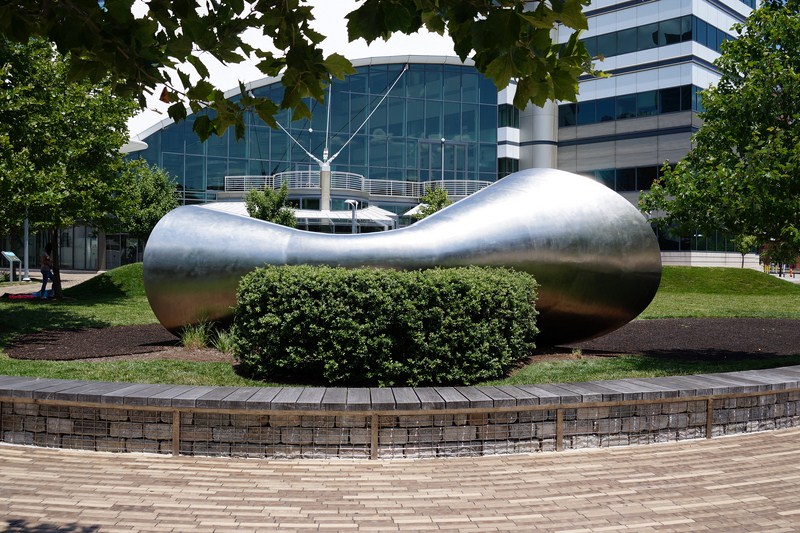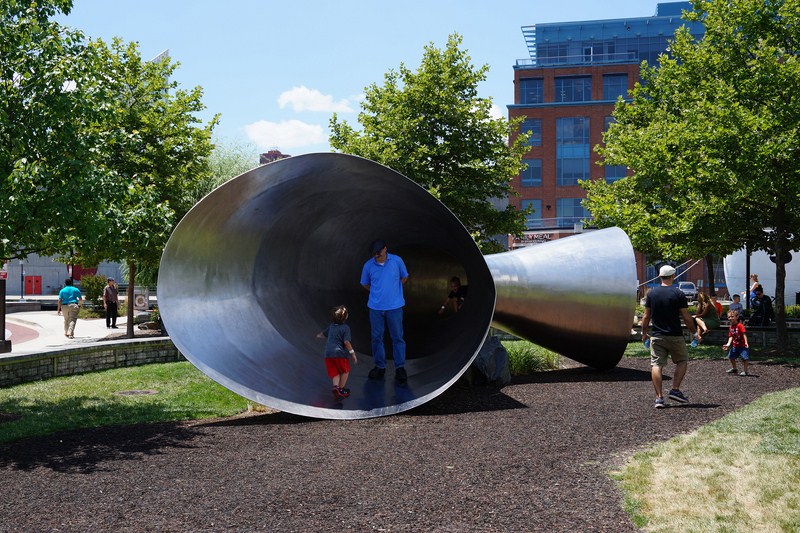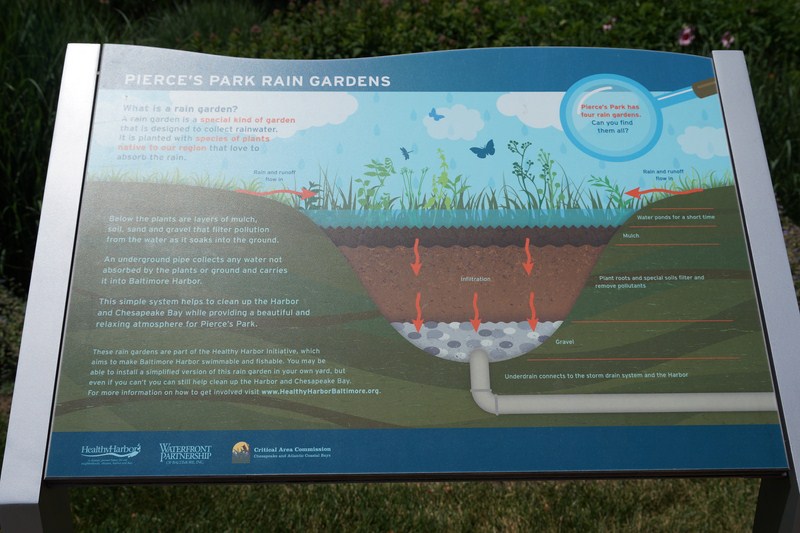This one-acre downtown urban park in Baltimore’s Inner Harbor, completed in 2012, is located on what had once been an underutilized and largely paved pass-through space along the city’s Inner Harbor. Developed to satisfy a need for a children’s play area in Downtown Baltimore, this unique open space, located on Pier 5 (between Columbus Center and Eastern Ave.) in Baltimore’s Inner Harbors, just across the street from the Pier 5 Hotel, is a short walk from the National Aquarium and other attractions.
Check out “Baltimore’s Inner Harbor“
It was loosely designed by landscape architects Mahan and Scott Rykiel as two unstructured, oval-shaped open play areas (for younger and older children), each ringed by planted earth berms and connected by a “Ribbon Walk,” a ribbon-like pathway that meanders through the site. Funded with help from the family of the late Baltimore businessman and community leader Pierce John Flanigan III, for whom the park is named, it also contains indigenous trees, native plantings, a living “willow tunnel” and a modern playground.
The whimsical, 36 ft. long “Homophone,” with its “Seussian” quality, is a custom stainless steel double horn and slide, two interactive, multi-sensory sculptures that were designed, fabricated (with 3/8” alloy 316 stainless steel plate) and installed by David Hess. It was designed for children to crawl, slide and listen to the sounds collected by and emanating from the sculpture. Hess also designed the over 800 pavers, the fence that produces musical sounds when tapped, signage and musical instruments for the park.
To celebrate Pierce’s love for language, hundreds of homophonic words are also inscribed along the intricate serpentine walkways to encourage children and adults to learn about wordplay and some of the anomalies of language. The curvilinear seating was built using recycled wood placed atop an eco-friendly gabion base made from cobblestone salvaged from an old city street buried beneath the site. A local Maryland quarry also donated the large boulders added to the park.
Wanting to make a statement about cleaning the water and thus emphasized storm water capture, treatment, and filtration in the park design, the landscape architects created four micro-bioretention facilities, beautifully planted bio-swales and rain gardens that treat storm water. Interpretative signage explains the landscape processes as well as educates children about the benefits of capturing runoff for the additional wildlife habitat.
Maintained by the Waterfront Partnership of Baltimore (which is focused on developing a “Healthy Harbor”), the park was the recipient of the 2013 Honor Award, Maryland/Potomac ASLA Best in Class Award for Landscape and Paving, Brick in Architecture
Pierce’s Park: 701 E Pratt St, Baltimore, Maryland 21202. Tel: 443-743-3308. Website: www.piercespark.org.

